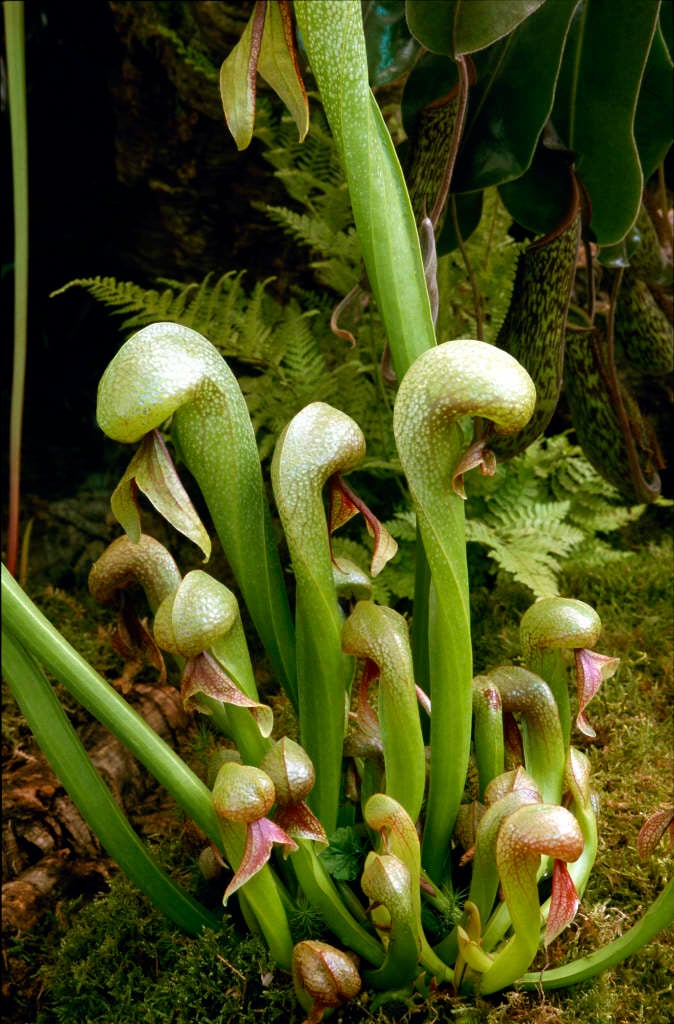Darlingtonia californica
Californian pitcher plant
A perennial to 40cm, forming a rosette of trumpet-shaped leaves with the red-veined top folded over to form a hood with a reddish appendage. Flowers 6cm across, bell-shaped, with narrow yellowish-green sepals surrounding heavily purple-veined petals

Buy this plant
Size
Ultimate height
0.1–0.5 metresTime to ultimate height
2–5 yearsUltimate spread
0.1–0.5 metresGrowing conditions
Moisture
Moist but well–drainedpH
Acid, NeutralColour & scent
| Stem | Flower | Foliage | Fruit | |
| Spring | Green Purple Yellow | Green Red | ||
|---|---|---|---|---|
| Summer | Green Red | |||
| Autumn | Green Red | |||
| Winter |
Position
- Full sun
Aspect
South–facing or East–facing
Exposure
Sheltered Hardiness
H3Botanical details
- Family
- Sarraceniaceae
- Native to GB / Ireland
- No
- Foliage
- Evergreen
- Habit
- Bushy
- Genus
Darlingtonia are carnivorous perennials with several pitcher-like leaves hooded at the top, and solitary, nodding flowers in spring
- Name status
Correct
- Plant range
- USA
How to grow
Cultivation
Grow under glass in full light with shelter from hot sun. In winter keep moist, cool and well ventilated. Grow outdoors in moist but sharply drained acid soil in full sun. Irrigate with lime-free water
Propagation
Propagate by seed
Suggested planting locations and garden types
- Patio and container plants
Pruning
No pruning required
Pests
May be susceptible to scale insects, mealybugs, aphids and tortrix moth
Diseases
Generally disease-free
Get involved
The Royal Horticultural Society is the UK’s leading gardening charity. We aim to enrich everyone’s life through plants, and make the UK a greener and more beautiful place.